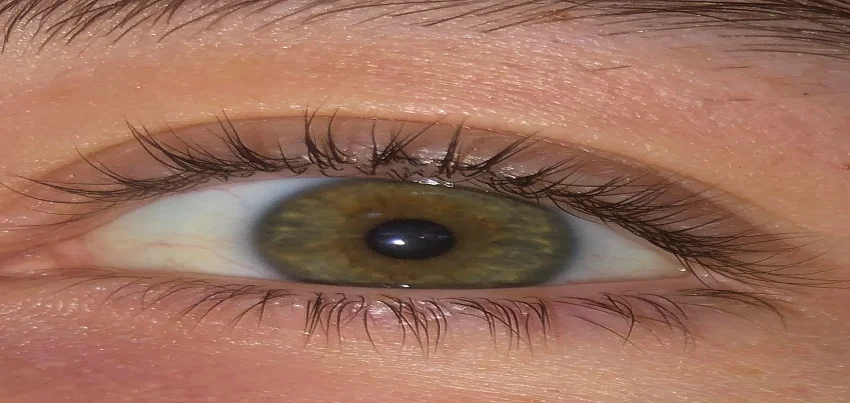PrognoHealth – Corporate Health & Wellness Specialist
Contact Us
+91 9510650660
Email Us
corpsales@prognohealth.com
Contact Us
+91 9510650660
Email Us
corpsales@prognohealth.com
Distichiasis : Causes, Symptoms, Treatment and Management
Distichiasis is a rare eye condition where an extra row of eyelashes, known as distichiasis eyelashes, grows from the meibomian glands on the inside of the eyelids. This abnormal growth can cause significant discomfort and various symptoms that impact the quality of life for those affected.
The primary symptoms of distichiasis include itchy eyelids, a sensation of having something in the eye, and increased sensitivity to light. These extra eyelashes, or extra eye lashes, can rub against the surface of the eye, leading to irritation, redness, and even corneal abrasions. The constant friction from these eyelashes inside the eyelid can also cause chronic eye inflammation and increase the risk of eye infections. Individuals with distichiasis may frequently experience watery eyes, pain, and a burning sensation in the eyes.
Distichiasis is considered a rare condition. The prevalence of this disorder varies, but it is estimated to affect approximately one in 10,000 people. How rare is distichiasis? While it is not a common condition, it can have a significant impact on those who suffer from it. The severity of the symptoms can vary from mild discomfort to severe irritation and vision problems.
The causes of distichiasis are often genetic. It can be inherited in an autosomal dominant pattern, meaning a single copy of the altered gene in each cell is sufficient to cause the disorder. Some cases may be associated with other genetic conditions, such as lymphedema-distichiasis syndrome. In this syndrome, individuals not only have an extra row of eyelashes but also suffer from lymphedema, which is the swelling of body parts due to lymphatic system malformations.
Treatment for distichiasis, also referred to as distichiasis treatment, depends on the severity of the symptoms. Mild cases may be managed with lubricating eye drops or ointments to reduce irritation and protect the cornea. However, more severe cases may require medical intervention. Eyelid treatment options include the removal of the extra eyelashes using techniques such as electrolysis, where an electric current is used to destroy the hair follicles, or cryotherapy, which involves freezing the follicles. Laser ablation and surgical removal of the abnormal eyelashes are other options. In some cases, a combination of these treatments may be necessary to achieve the best results.
Preventing the eyelashes causing eye irritation from regrowing can be challenging. Follow-up treatments are often needed to manage the condition effectively. Patients with distichiasis should have regular eye examinations to monitor for potential complications and to ensure that their treatment plan remains effective.
Living with distichiasis can be challenging due to the chronic nature of the symptoms and the need for ongoing treatment. However, with proper management and regular medical care, individuals with this condition can achieve relief from the discomfort and maintain good eye health. Awareness of the condition and understanding the available treatment options are crucial for those affected by this rare eyelash disorder.
Distichiasis is a rare condition in which an additional row of eyelashes grows from the meibomian glands in the eyelid, leading to irritation and discomfort. These extra eyelashes may be present at birth or may develop later in life.
Symptoms of distichiasis include discomfort and irritation of the eye, including redness, itching, and watering of the eye, as well as the feeling of something in the eye. In some cases, the extra eyelashes may also rub against the eye, causing damage to the cornea and potentially leading to vision loss.
Diagnosis of distichiasis is typically made through a physical examination by an ophthalmologist or an optometrist. During the examination, the doctor will examine the eyelids and the lashes, and may also use a microscope to examine the eyelashes more closely.
Common treatment methods for distichiasis include the removal of the extra eyelashes through electrolysis, laser therapy, or surgical excision. Electrolysis and laser therapy involve destroying the hair follicles responsible for the extra eyelashes, while surgical excision involves physically removing the extra lashes.
Preventing distichiasis from occurring can be done through regular annual health check-ups and corporate health & wellness programs. These check-ups can help to identify and address any underlying conditions that may be contributing to the development of distichiasis.
Additionally, maintaining a healthy diet and regular exercise can also help to prevent distichiasis from occurring. A diet that is rich in fruits, vegetables, and lean protein can help to support the overall health of the body, while regular exercise can help to keep the body in good shape.
It is important to note that Distichiasis is a rare and benign condition, it can be treated by a qualified ophthalmologist or optometrist with various treatment options that can be chosen based on the patient’s preference and the severity of the condition.
In summary, Distichiasis is a rare condition characterized by the growth of an additional row of eyelashes, leading to discomfort and irritation of the eye. It can be diagnosed through a physical examination and treated through electrolysis, laser therapy, or surgical excision. To prevent it from occurring, regular annual health check-ups and corporate health & wellness programs and maintaining a healthy diet and regular exercise are recommended.
Frequently Asked Questions (FAQ’s):
1. What is distichiasis?
Distichiasis is a rare eye condition where an extra row of eyelashes grows from the meibomian glands on the inside of the eyelids. These abnormal eyelashes can cause various eye problems, including irritation and inflammation.
2. What are the symptoms of distichiasis?
The primary symptoms of distichiasis include itchy eyelids, a sensation of having something in the eye, light sensitivity, redness, and eye irritation. These symptoms are caused by the extra eyelashes rubbing against the eye’s surface.
3. How rare is distichiasis?
Distichiasis is considered a rare condition, affecting approximately one in 10,000 people. While it is uncommon, it can significantly impact those who have it.
4. What causes distichiasis?
Distichiasis is often caused by genetic factors. It can be inherited in an autosomal dominant pattern, meaning only one altered gene is necessary to develop the condition. Some cases are associated with genetic syndromes like lymphedema-distichiasis syndrome.
5. How is distichiasis diagnosed?
Distichiasis is diagnosed through a comprehensive eye examination by an ophthalmologist. The doctor will look for extra eyelashes growing from the meibomian glands and assess any related eye irritation or damage.
6. Can distichiasis affect vision?
Yes, distichiasis can affect vision, especially if the extra eyelashes cause constant irritation or damage to the cornea. This can lead to chronic eye inflammation and increase the risk of infections.
7. What treatment options are available for distichiasis?
Treatment options for distichiasis vary depending on the severity of symptoms. They include lubricating eye drops, electrolysis, cryotherapy, laser ablation, and surgical removal of the extra eyelashes. Regular follow-up treatments may be necessary.
8. What is electrolysis for distichiasis?
Electrolysis is a treatment method where an electric current is used to destroy the hair follicles of the extra eyelashes. This helps prevent the eyelashes from regrowing and causing further irritation.
9. How does cryotherapy treat distichiasis?
Cryotherapy involves freezing the hair follicles of the extra eyelashes, effectively destroying them to prevent regrowth. This treatment helps reduce eye irritation and inflammation.
10. Is distichiasis associated with other conditions ?
Yes, distichiasis can be associated with other genetic conditions, such as lymphedema-distichiasis syndrome. This syndrome involves both an extra row of eyelashes and swelling of body parts due to lymphatic system malformations.
11. Can lubricating eye drops help with distichiasis?
Lubricating eye drops can help manage the symptoms of distichiasis by reducing eye irritation and protecting the cornea. They are often used in mild cases to provide relief.
12. What is the prognosis for someone with distichiasis?
With proper management and treatment, individuals with distichiasis can achieve relief from symptoms and maintain good eye health. Regular eye examinations and follow-up treatments are essential for managing the condition effectively.
13. Can distichiasis be cured permanently?
While treatments can significantly reduce symptoms and prevent regrowth of the extra eyelashes, distichiasis may not be permanently cured. Ongoing management and follow-up treatments are often necessary.
14. Are there any complications associated with untreated distichiasis?
Yes, untreated distichiasis can lead to chronic eye inflammation, corneal abrasions, increased risk of eye infections, and potential vision problems. Early diagnosis and treatment are crucial to prevent complications.
15. How can I manage distichiasis at home?
In addition to medical treatments, you can manage distichiasis at home by using lubricating eye drops, maintaining good eye hygiene, and avoiding rubbing your eyes. Regular eye check-ups with an ophthalmologist are also essential.
Blog Categories
Top rated products
-
 FB Health Checkup I
Rated 5.00 out of 5
FB Health Checkup I
Rated 5.00 out of 5₹3,000.00Original price was: ₹3,000.00.₹1,770.00Current price is: ₹1,770.00. -
 Healthy Life Male
Rated 0 out of 5
Healthy Life Male
Rated 0 out of 5₹18,000.00Original price was: ₹18,000.00.₹9,900.00Current price is: ₹9,900.00. -
 Complete Men’s Health Profile – 40+ – 136 Parameters
Rated 0 out of 5₹2,899.00
Complete Men’s Health Profile – 40+ – 136 Parameters
Rated 0 out of 5₹2,899.00 -
 OFFICE STAFF PACK II
Rated 0 out of 5
OFFICE STAFF PACK II
Rated 0 out of 5₹2,400.00Original price was: ₹2,400.00.₹1,320.00Current price is: ₹1,320.00. -
 FB Health Checkup III
Rated 0 out of 5₹11,000.00
FB Health Checkup III
Rated 0 out of 5₹11,000.00
About Us
Progno Health is a Corporate Health & Wellness Specialist providing services to Pan India. We offer Pre-employment Health Checkup Packages, Annual Health Checkup Packages, Executive Health Checkup Packages, Occupational Health Checkup Packages, and other Health & Wellness Services.




